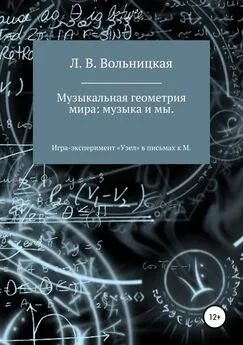Филип Болл - Музыкальный инстинкт. Почему мы любим музыку
- Название:Музыкальный инстинкт. Почему мы любим музыку
- Автор:
- Жанр:
- Издательство:Литагент 5 редакция
- Год:2021
- Город:Москва
- ISBN:978-5-04-113519-5
- Рейтинг:
- Избранное:Добавить в избранное
-
Отзывы:
-
Ваша оценка:
Филип Болл - Музыкальный инстинкт. Почему мы любим музыку краткое содержание
Музыкальный инстинкт. Почему мы любим музыку - читать онлайн бесплатно ознакомительный отрывок
Интервал:
Закладка:
Karno, M. and Konecni, V. ‘The effects of structural interventions in the first movement of Mozart’s Symphony in G Minor K550 on aesthetic preference’, Music Perception 10, 63—72 (1992).
Kessler, E. J., Hansen, C. and Shepard, R. N. ‘Tonal schemata in the perception of music in Bali and the West’, Music Perception 2, 131—65 (1984).
Kivy, P. Introduction to a Philosophy of Music. Oxford University Press, Oxford, 2002.
Kivy, P. The Corded Shell: Reflections on Musical Expression. Princeton University Press, Princeton, 1980.
Kivy, P. New Essays on Musical Understanding. Oxford University Press, Oxford, 2001.
Koelsch, S. and Mulder, J. ‘Electric brain responses to inappropriate harmonies during listening to expressive music’, Clinical Neurophysiology 113, 862—69 (2002).
Koelsch, S., Kasper, E., Sammler, D., Schulze, K., Gunter, T. and Friederici, A. D. ‘Music, language and meaning: brain signatures of semantic meaning’, Nature Neuroscience 7, 302—7 (2004).
Koelsch, S. and Siebel, W. A. ‘Towards a neural basis of music perception’, Trends in Cognitive Sciences 9, 578—84 (2005).
Koelsch, S., Gunter, T. C., Wittfoth, M. and Sammler, D. ‘Interaction between syntax processing in language and in music: an ERP study’, Journal of Cognitive Neuroscience 17, 1565—77 (2005).
Koelsch, S., Fritz, T., Yves von Cramon, D., Müller, K. and Friederici, A. D. ‘Investigating emotion with music: an fMRI study’, Human Brain Mapping 27, 239—50 (2006).
Koelsch, S., Kilches, S., Steinbeis, N. and Schelinski, S. ‘Effects of unexpected chords and of performer’s expression on brain responses and electrodermal activity’, PLoS One e2631 (2008).
Koelsch, S., Fritz, T. and Schlaug, G. ‘Amygdala activity can be modulated by unexpected chord functions during music listening’, NeuroReport 19, 1815—19 (2008).
Koopman, C. and Davies, S. ‘Musical meaning in a broader perspective’, Journal of Aesthetics and Art Criticism 59, 261—73 (2001).
Kramer, J. D. The Time of Music: New Meanings, New Temporalities, New Listening Strategies. Schirmer, New York, 1988.
Kramer, L. Musical Meaning: Towards a Critical History. University of California Press, Berkeley, 2002.
Kreutz, G., Bongard, S., Rohrmann, S., Hodapp, V. and Grebe, D. ‘Effects of choir singing and listening on secretory immunoglobulin A, cortisol, and emotional state’, Journal of Behavioral Medicine 27, 623—35 (2004).
Krumhansl, C. L. Cognitive Foundations of Musical Pitch. Oxford University Press, New York, 1990.
Krumhansl, C. L. ‘Music psychology: tonal structures in perception and memory’, Annual Reviews of Psychology 42, 277 (1991).
Krumhansl, C. L. ‘A perceptual analysis of Mozart’s piano sonata, K282: segmentation, tension, and musical ideas’, Music Perception 13, 401—32 (1996).
Krumhansl, C. L. and Keil, F. C. ‘Acquisition of the hierarchy of tonal functions in music’, Memory & Cognition 10, 243—51 (1982).
Krumhansl, C. L. and Kessler, E. J. ‘Tracing the dynamic changes in perceived tonal organization in a spatial representation of musical keys’, Psychological Review 89, 334—68 (1982).
Krumhansl, C. L. and Lerdahl, F. ‘Modeling tonal tension’, Music Perception 24, 329—66 (2007).
Krumhansl, C. L., Louhivuori, J., Toiviainen, P., Järvinen, T. and Eerola, T. ‘Melodic expectation in Finnish folk hymns: convergence of statistical, behavioral, and computational approaches’, Music Perception 17, 151—97 (1999).
Krumhansl, C. L., Sandell, G. J. and Sergeant, D. C. ‘The perception of tone hierarchies and mirror forms in twelve-tone serial music’, Music Perception 5, 31—78 (1987).
Krumhansl, C. L. and Schmuckler, M. A. ‘The Petroushka chord’, Music Perception 4, 153—84 (1986).
Krumhansl, C. L., Toivanen, P., Eerola, T., Toiviainen, P., Järvinen, T. and Louhivuori, J. ‘Cross-cultural music cognition: cognitive methodology applied to North Sami yoiks’, Cognition 76, 13—58 (2000).
Krumhansl, C. L. ‘An exploratory study of musical emotions and psychophysiology’, Canadian Journal of Experimental Psychology 51, 336—53 (1997).
Langer, S. K. Philosophy in a New Key: A Study in the Symbolism of Reason, Rite, and Art, 3rd edn. Harvard University Press, Cambridge, Ma., 1957.
Large, E. W. and Palmer, C. ‘Perceiving temporal regularity in music’, Cognitive Science 26, 1—37 (2002)
Lerdahl, F. and Jackendoff, R. A Generative Theory of Tonal Music, 2nd edn. MIT Press, Cambridge, Ma., 1996.
Lerdahl, F. ‘Tonal pitch space’, Music Perception 5, 315—50 (1988).
Lerdahl, F. ‘Cognitive constraints on compositional systems’, in J. Sloboda (ed.) Generative Processes in Music. Oxford University Press, Oxford, 1988.
Lerdahl, F. Tonal Pitch Space. Oxford University Press, New York, 2001.
Lerdahl, F. ‘Calculating tonal tension’, Music Perception 13, 319—63 (1996).
Lerdahl, F. and Krumhansl, C. L. ‘Modeling tonal tension’, Music Perception 24, 329—66 (2007).
Levitin, D. J. This is Your Brain on Music: The Science of a Human Obsession. Plume, New York, 2007.
Lippman, E. A History of Western Musical Aesthetics. University of Nebraska Press, Lincoln, 1992.
Lomax, A. ‘Universals in song’, World of Music 19 (1/2), 117—29 (1977).
Longuet-Higgins, H. C. ‘Making sense of music’, Proceedings of the Royal Institution of Great Britain 45, 87—105 (1972).
Longuet-Higgins, H. C. and Lee, C. S. ‘The rhythmic interpretation of monophonic music’, in H. C. Longuet-Higgins (ed.), Mental Processes, MIT Press, Cambridge, Ma., 1987, pp. 150—68.
Longuet-Higgins, H. C. and Lee, C. S., ‘The perception of musical rhythms’, Perception 11, 115—28 (1982).
Lu, T. – C. ‘Music and salivary immunoglobulin A (sIgA): a critical review of the research literature’. Thesis, Drexel University, 2003.
Maess, B., Koelsch, S., Ganter, T. C. and Friederici, A. D. ‘Musical syntax is processed in Broca’s area: an MEG study’, Nature Neuroscience 4, 540—5 (2001).
Manning, J. The Finger Ratio. Faber & Faber, London, 2008.
Marvin, E. W. and Brinkman, A. ‘The effect of modulation and formal manipulation on perception of tonic closure by expert listeners’, Music Perception 16, 389—408 (1999).
Masataka, N. ‘Preference for consonance over dissonance by hearing newborns of deaf parents and of hearing parents’, Developmental Science 9, 46—50 (2006).
Maus, F. E. ‘Music as drama’, Music Theory Spectrum 10, 56—73 (1988).
Maus, F. ‘Music as narrative’, Indiana Theory Review 12, 1—34 (1991).
May, E. (ed.) Music of Many Cultures: An Introduction. University of California Press, Berkeley, 1980.
McAdams, S. and Bigand, E. (eds). Thinking in Sound: The Cognitive Psychology of Human Audition. Oxford University Press, Oxford, 1993.
McClary, S. Feminine Endings: Music, Gender and Sexuality. University of Minnesota Press, Minneapolis, 1991.
McDermott, J. ‘The evolution of music’, Nature 453, 287—8 (2008).
McDermott, J. and Hauser, M. ‘Are consonant intervals music to their ears? Spontaneous acoustic preferences in a nonhuman primate’, Cognition 94, B11–B21 (2004).
McDermott, J. and Hauser, M. ‘The origins of music: innateness, uniqueness and evolution’, Music Perception 23, 29—59 (2005).
McDermott, J. and Hauser, M. D. ‘Thoughts on an empirical approach to evolutionary origins of music’, Music Perception 24, 111—6 (2006).
McDermott, J. H., Lehr, A. J. and Oxenham, A. J. ‘Is relative pitch specific to pitch?’, Psychological Science 19, 1263—71 (2008).
McDonald, C. and Stewart, L. ‘Uses and functions of music in congenital amusia’, Music Perception 25, 345—55 (2008).
Merriam, A. P. The Anthropology of Music. Northwestern University Press, Evanston, 1964.
Meyer, L. B. Emotion and Meaning in Music. University of Chicago Press, Chicago, 1956.
Meyer, L. B. ‘Commentary’, Music Perception 13, 455—83 (1996).
Mithen, S. The Singing Neanderthals. Weidenfeld & Nicolson, London, 2005.
Moore, A. F. Rock: The Primary Text. Ashgate, Aldershot, 2001.
Moore, A. ‘The so-called “flattened seventh” in rock’, Popular Music 14, 185—201 (1995).
Musacchia, G., Sams, M., Skoe, E. and Kraus, N. ‘Musicians have enhanced subcortical and audiovisual processing of speech and music’, Proceedings of the National Academy of Sciences USA 104, 15894—8 (2007).
Musicae Scientiae special issue on emotions and music (2001/2002).
Narmour, E. The Analysis and Cognition of Basic Melodic Structures.
University of Chicago Press, Chicago, 1990.
Narmour, E. ‘The top-down and bottom-up systems of musical implication: building on Meyer’s theory of emotional syntax’, Music Perception 9, 1—26 (1991).
Narmour, E. ‘Analysing form and measuring perceptual content in Mozart’s sonata K282: a new theory of parametric analogues’, Music Perception 13, 265—318 (1996).
Nasr, S. ‘Audio software for the moody listener’, Technology Review online, 19 July 2006; Доступно на http://www.technologyreview.com/ read_article.aspx?id=17183&ch=infotech.
Nattiez, J. J. Music and Discourse: Toward a Semiology of Music. Princeton University Press, Princeton, 1990.
Nettl, B. Folk and Traditional Music of the Western Continents, 2nd edn. Prentice-Hall, Eaglewood Cliffs, NJ, 1973.
Newcomb, A. ‘Once more “between absolute and program music”: Schumann’s Second Symphony’, 19th Century Music 7, 233—50 (1984).
Oram, N. and Cuddy, L. L. ‘Responsiveness of Western adults to pitchdistributional information in melodic sequences’, Psychological Research 57, 103—18 (1995).
Page, M. F. ‘Perfect harmony: a mathematical analysis of four historical tunings’, Journal of the Acoustical Society of America 116, 2416—26 (2004).
Palmer, C. and Kelly, M. H. ‘Linguistic prosody and musical meter in song’, Journal of Memory and Language 31, 525—42 (1992).
Parncutt, R. Harmony: A Psychoacoustical Approach. Springer, Berlin, 1989.
Partch, H. Genesis of a Music. Da Capo, New York, 1974.
Patel, A. D., Gibson, E., Ratner, J., Besson, M. and Holcomb, P. J. ‘Processing syntactic relations in language and music: an eventrelated potential study’, Journal of Cognitive Neuroscience 10, 717—33 (1998).
Patel, A. D. ‘Syntactic processing in language and music: different cognitive operations, similar neural resources?’, Music Perception 16, 27—42 (1998).
Patel, A. D. ‘Language, music, syntax and the brain’, Nature Neuroscience 6, 674—81 (2003).
Patel, A. D. ‘Musical rhythm, linguistic rhythm, and human evolution’, Music Perception 24, 99—104 (2006).
Patel, A. D. ‘Talk of the tone’, Nature 453, 726—7 (2008).
Patel, A. D., Iversen, J. R. and Rosenberg, J. C. ‘Comparing the rhythm and melody of speech and music: the case of British English and French’, Journal of the Acoustical Society of America 119, 3034—47 (2006).
Patel, A. D. and Iversen, J. R. ‘The linguistic benefits of musical abilities’, Trends in Cognitive Sciences 11, 369—72 (2007).
Patel, A. D. Music, Language, and the Brain. Oxford University Press, New York, 2008.
Patel, A. D., Iversen, J. R., Bregman, M. R. and Schultz, I. ‘Studying synchronization to a musical beat in nonhuman animals’, Annals of the New York Academy of Sciences (in press).
Pederson, P. ‘The perception of octave equivalence in twelve-tone rows’, Psychology of Music 3, 3—8 (1975).
Peretz, I., Gagnon, L. and Bouchard, B. ‘Music and emotion: perceptual determinants, immediacy, and isolation after brain damage’, Cognition 68, 111—41 (1998).
Читать дальшеИнтервал:
Закладка:










